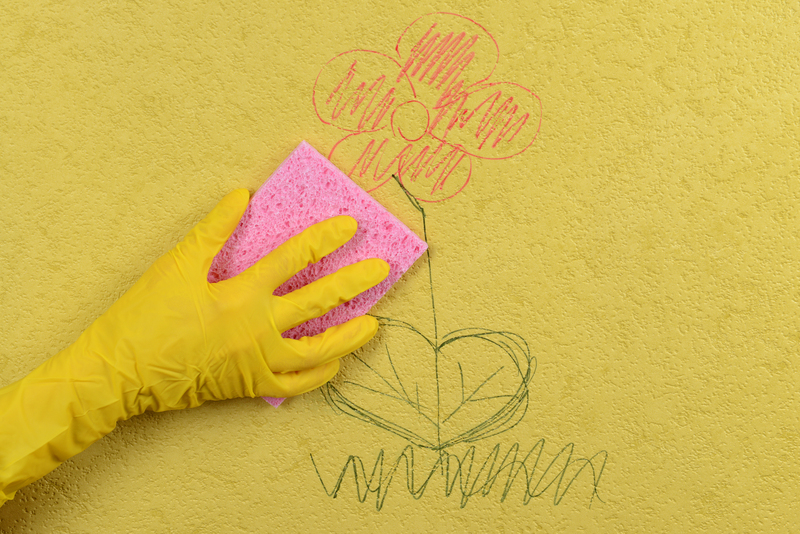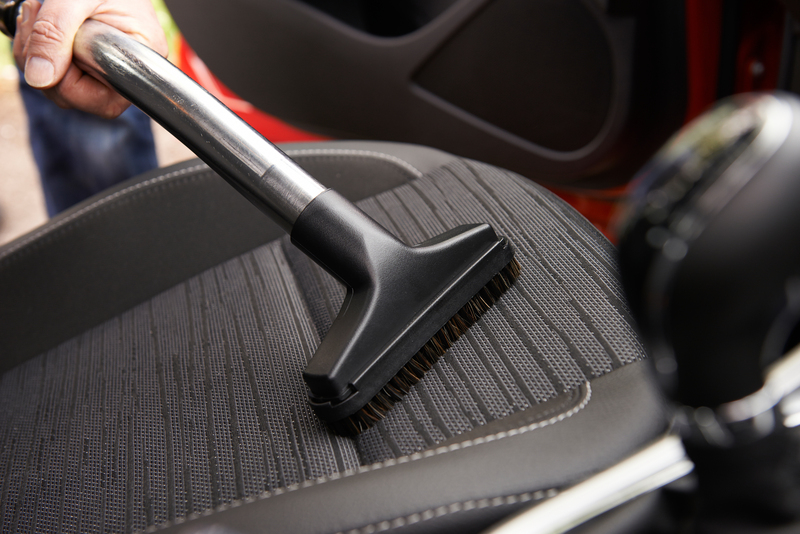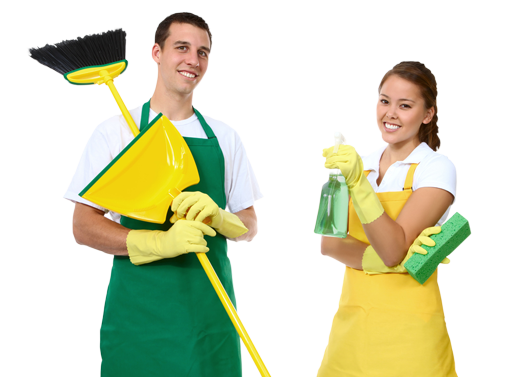Secrets to Maintaining a Mold-Free Bathroom Space
Posted on 19/06/2025
A mold-free bathroom space is every homeowner's dream. Not only does it contribute to a healthier home, but it also ensures your bathroom stays fresh, clean, and attractive. Mold and mildew thrive in the damp, warm environments often found in bathrooms, and their presence can lead to structural damage, musty odors, and even health issues like allergies and asthma. In this comprehensive guide, we'll reveal expert tips and secrets to permanently banish mold from your bathroom and maintain a sparkling, hygienic sanctuary.
Understanding Mold Growth in Bathrooms
Before diving into the secrets of a mold-free bathroom zone, it's essential to understand why mold flourishes in this particular space. Mold thrives in environments with:
- Excess moisture
- Poor ventilation
- Low light
- Organic materials for food (like soap scum, dust, fabric, or wood)
Bathrooms provide the perfect breeding ground for mold due to frequent water use, steamy showers, and often limited airflow. By understanding these conditions, we can target the root causes and develop a long-lasting mold prevention strategy.

The Secrets to a Mold-Free Bathroom Environment
1. Maximize Bathroom Ventilation
Ventilation is your bathroom's best friend in the fight against mold. Without proper air circulation, lingering humidity provides the ideal environment for mold spores to flourish. Here's how to boost your bathroom's airflow:
- Install a high-quality exhaust fan: Ensure your fan is appropriately rated for your bathroom's size, and run it during and after showers for at least 20-30 minutes.
- Open windows and doors: When weather permits, crack open a window or leave the bathroom door ajar to enable cross-ventilation.
- Consider using a dehumidifier: In particularly humid climates, a small portable dehumidifier can help maintain optimal moisture levels and deter mold growth.
2. Control Moisture with Smart Habits
Since excess moisture is the main culprit behind bathroom mold, learning to control bathroom dampness through everyday habits is vital. Here are some effective tactics:
- Wipe down wet surfaces: After showering or bathing, use a squeegee or towel to remove water from tiles, glass doors, and walls.
- Fix leaks promptly: Even a tiny drip from a faucet, showerhead, or toilet can fuel mold growth over time. Address leaks immediately.
- Keep shower curtains and liners spread out: This allows them to dry completely and prevents trapped moisture that encourages mildew.
- Hang towels and bath mats to dry: Don't leave fabric bunched up or on the floor where mold can easily develop.
3. Choose Mold-Resistant Materials and Finishes
Updating your bathroom with mold-resistant materials can make a significant impact. Consider these key upgrades:
- Mold-resistant paint: Many paint formulas are specially designed for high-moisture areas and contain antimicrobial agents that inhibit mold.
- Ceramic, porcelain, or glass tiles: These nonporous materials repel moisture better than natural stone or wood.
- Waterproof caulking and grout: Properly sealing the joints around your tub, shower, and sink will keep water from seeping behind walls and floors where mold is harder to detect.
- Solid surface counters: Quartz, granite, and engineered stone are less susceptible to absorbing water or growing mold than laminate or wood.
4. Establish a Consistent Cleaning Routine
Regular cleaning is critical to maintaining a mold-free bathroom sanctuary. Mold and mildew can begin growing in as little as 24-48 hours if conditions are right, so diligence is key.
- Use mold-inhibiting cleaners: Products containing bleach, hydrogen peroxide, or vinegar are powerful against spores. Always ventilate the area when using strong cleaners.
- Focus on trouble spots: Pay special attention to grout lines, corners, window sills, and behind the toilet, as these are frequent problem areas.
- Deep-clean soft materials: Launder shower curtains, liners, and bath mats in hot water weekly or biweekly to kill any developing spores.
5. Eliminate Clutter and Improve Organization
Clutter provides more surfaces and materials for mold to latch onto and restricts airflow essential for quick drying. Try these tips for a streamlined, mold-resistant bathroom space:
- Keep shelves clean and tidy: Store toiletries in baskets or on raised racks, and avoid overcrowding counters or corners.
- Opt for plastic or metal storage: These materials won't absorb water like fabric, wood, or other porous substances.
- Regularly clean and rotate products: Wipe down bottles, tubes, and organizers, and avoid accumulating unused personal care items.
Proactive Maintenance: Prevent Mold Before It Starts
Monitor Humidity Levels
To maintain a mold-free bathroom, try to keep humidity below 50-55%. A simple hygrometer can help you monitor moisture and ensure your efforts are working. If you find consistently high readings, adjust your fan use or invest in a dehumidifier.
Inspect Regularly for Early Signs of Mold
A quick visual inspection every week can save you from big problems down the line. Watch for:
- Discoloration or staining on ceilings, walls, or grout
- Musty odors, even if you can't see visible mold
- Poorly performing ventilation or persistent condensation on surfaces
Seal and Repair Damaged Areas Promptly
Loose tiles, cracked grout, and deteriorating caulking all invite hidden water intrusion--the perfect hiding place for mold colonies. Address these maintenance issues immediately with waterproof fillers or replacement materials.
Natural Remedies for Mold Prevention
While chemical cleaners are very effective, many homeowners prefer gentler, non-toxic approaches, especially for ongoing mold prevention in bathrooms:
- Vinegar: Kills over 80% of mold species. Spray full-strength on problem areas and let sit before scrubbing.
- Baking soda: Acts as a mild abrasive and deodorizer. Mix with water to form a paste and use it on grout and tiles.
- Tea tree oil: A natural antifungal. Add a teaspoon to a spray bottle of water and mist surfaces regularly.
Remember to test on a small area first, especially with natural stone or delicate finishes!
What to Do If Mold Has Already Taken Hold
Sometimes, despite our best efforts, mold invades. If you spot small areas (less than three feet squared), you can typically remove bathroom mold yourself:
- Wear gloves, a mask, and protective goggles.
- Ventilate the area thoroughly.
- Spray the moldy surface with your chosen cleaner (bleach, vinegar, peroxide, or a specialized product).
- Scrub with a stiff brush and rinse with clean water.
- Dry the area completely.
If the mold covers a large area, is reoccurring, or seems embedded behind walls or below flooring, consult a mold remediation specialist to investigate and resolve the underlying issue safely.

Top FAQ About Maintaining a Mold-Free Bathroom Space
How often should I clean my bathroom to prevent mold?
Aim to wipe down bathrooms at least weekly. High-traffic or poorly ventilated bathrooms may need spot cleaning more frequently.
Are there special paints for preventing bathroom mold?
Yes, mold-resistant or mildew-resistant paints are specifically formulated with antimicrobial agents to block the growth of mold on painted surfaces. Ideal for bathroom walls and ceilings.
Can houseplants help reduce mold in the bathroom?
Some houseplants may help absorb moisture or purify air, but they are not a replacement for proper ventilation and cleaning. In fact, overwatering bathroom plants can add to humidity or harbor mold on soil and leaves.
How can I tell if I have mold behind my tiles?
Watch for persistent stains, soft or warped drywall, or a musty odor that doesn't go away. These may signal hidden mold and should be investigated by a professional.
Conclusion: Your Path to a Lasting Mold-Free Bathroom Sanctuary
Creating and maintaining a mold-free bathroom is all about awareness, consistency, and smart preventive action. By addressing moisture, improving ventilation, cleaning regularly, selecting mold-resistant materials, and tackling repairs promptly, you can enjoy a clean, healthy bathroom year-round.
The true secret lies not in any single action, but in a holistic approach that turns your bathroom from a potential mold harbor into a sparkling retreat. Begin by applying one or two tips today, and soon, your mold-free bathroom space will become your favorite part of your home!
- Stop moisture before it starts.
- Choose materials wisely.
- Develop cleaning habits that last a lifetime.
- Inspect, maintain, and refresh as needed.
A healthier, fresher, and more beautiful bathroom is within your reach. Start your journey to a mold-free space today!




